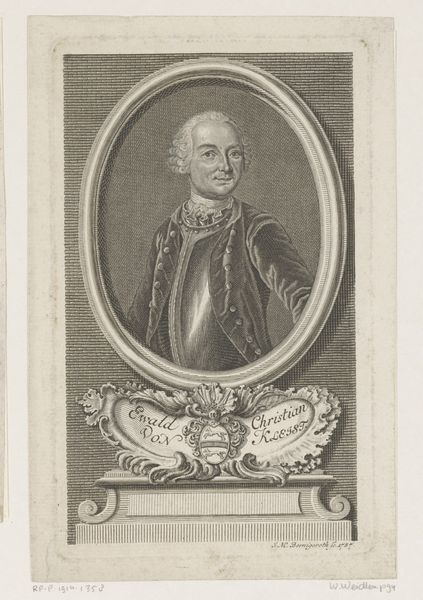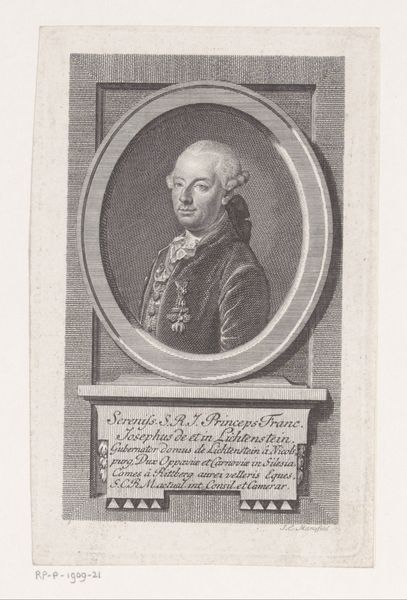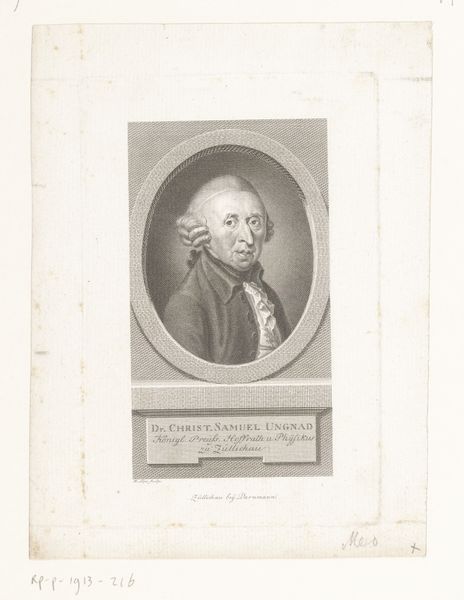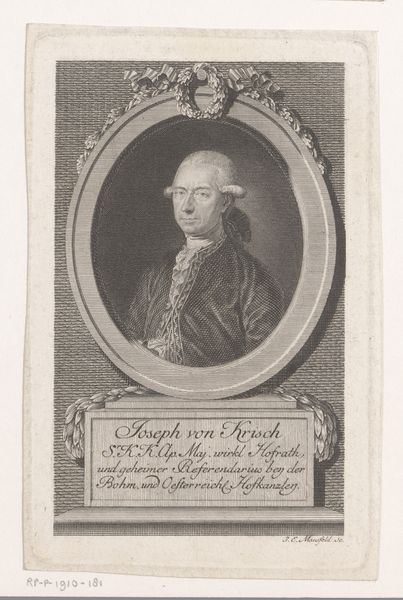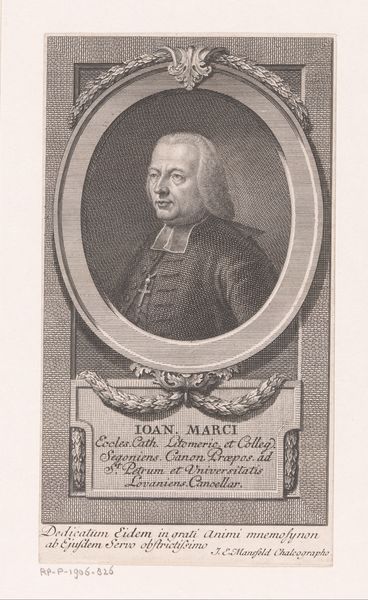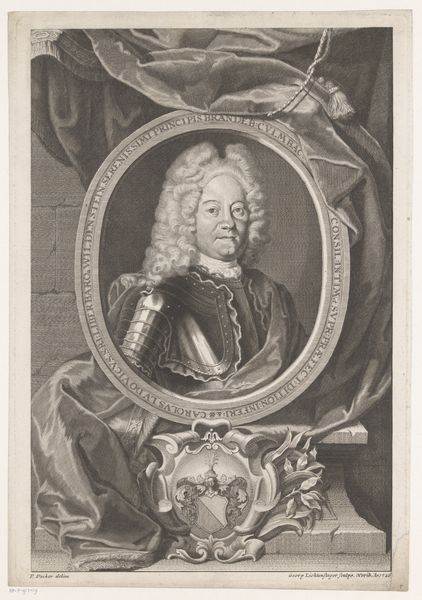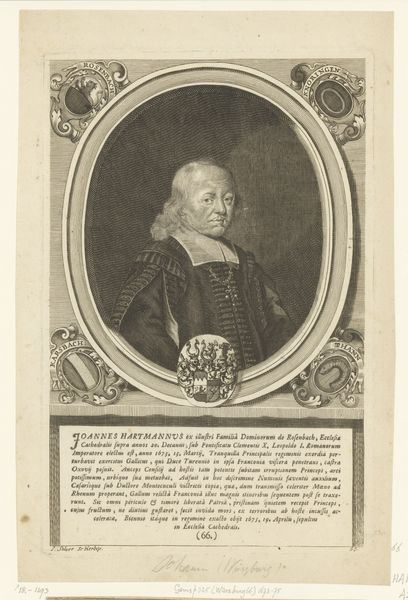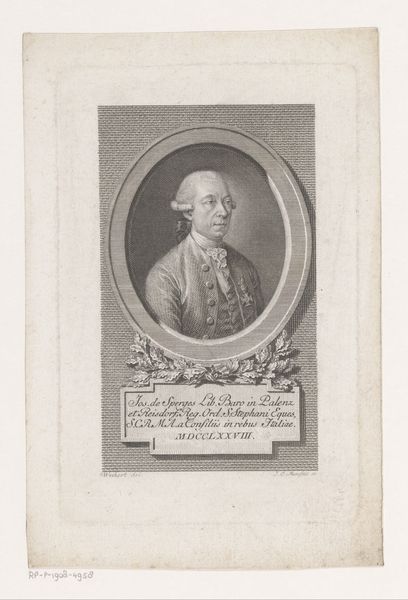
Dimensions: height 333 mm, width 225 mm
Copyright: Rijks Museum: Open Domain
Editor: This is "Portret van Maximilian, Graf von Berchem," an engraving from between 1751 and 1795, now at the Rijksmuseum. It has that formal, almost stuffy feel that I associate with portraits from this period. What can you tell me about its historical context? Curator: Well, engravings like this played a crucial role in shaping public perception, especially in an era before widespread photography. The subject, Maximilian, is portrayed with an air of nobility and intelligence. Notice how the artist has framed the image and included the crest. Why do you think those choices were made? Editor: I guess it was important to signal his social standing. But beyond that, how would an image like this have been used? Curator: These portraits were powerful tools for constructing and reinforcing social hierarchies. Circulated as prints, they broadcasted images of authority, reminding viewers of their place within the existing power structures. Think of it as early public relations – carefully managed imagery to cultivate a specific image. And this isn't just about Maximilian as an individual. How else can one imagine it affecting contemporary viewers and their socio-political thinking? Editor: So, it's not just about individual vanity but also about reinforcing class structures... almost like visual propaganda? Curator: Exactly! It's fascinating how seemingly simple portraiture served as a tool in a complex political game. What strikes me now is how the frame – with that ornate wreath – emphasizes and maybe aggrandizes his identity. Editor: I never thought of portraiture in this way, it has definitely added another layer for me to analyze when encountering portraiture art. Curator: Likewise! The details within can open our eyes to the power dynamics present when they were originally conceived.
Comments
No comments
Be the first to comment and join the conversation on the ultimate creative platform.

